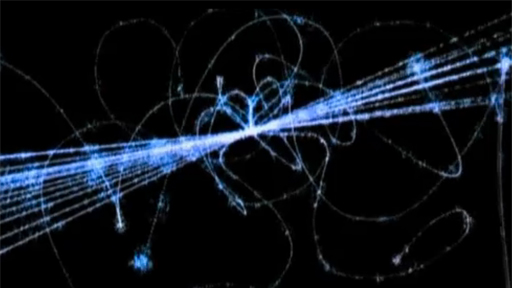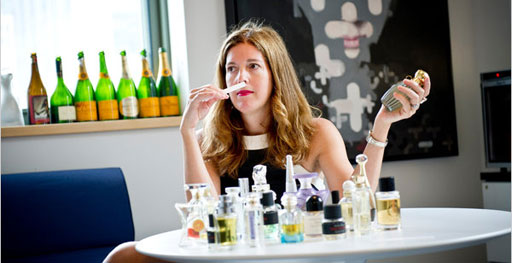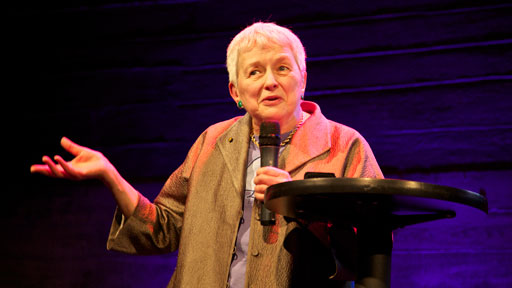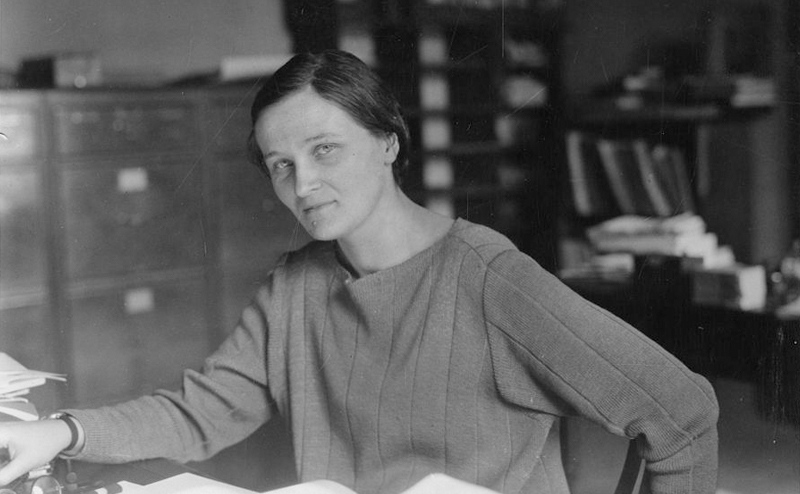Articles
Watch Sneak Peak: What Is Space? on PBS. See more from NOVA. In the run-up to the premiere of NOVA’s The Fabric of the Cosmos with Brian Greene, PBS is releasing sneak peaks of the series. In this clip, as our friends at Scientific American point out, Peter Higgs explains the origins of the hypothetical elementary particle that could help explain how matter was created. Physicists have long thought that the Higgs particle should exist but have yet to find it. With the aid of the Large Hadron Collider in Europe, the elusive Higgs boson may finally come out of hiding. In the clip, Higgs, now an emeritus professor at the University of Edinburgh in Scotland, tells of his nerve-racking 1964 presentation at the Institute for Advanced Study in Princeton, N.J., when his ideas still ran counter to conventional wisdom. Also featured in the video are physicists Joseph Lykken of Fermilab, Raphael Bousso of the University of California, Berkeley, and Leonard Susskind of Stanford University.
Read MoreWhat do we mean when we say a machine thinks? Computers and robots have long been able to crunch impossibly large numbers and execute complex scripted tasks. However, now they’re winning game shows, teaching themselves how to walk, and even rediscovering calculus. But do they truly think? Can they ever learn to feel? And what would it mean for robots to have a soul? Man Made Minds: Living with Thinking Machines is an in-depth look at the emerging advances in artificial intelligence and the increasingly clever machines that stand to reshape our near future. David Ferrucci, a principle investigator at IBM’s T.J. Watson’s Research Center, takes us inside the mind of the supercomputer, and recent Jeopardy! champion, WATSON. Roboticist Hod Lipson shows us new robots that are able to perceive their environment and teach themselves abilities—such as proprioception—long assumed to be solely biological phenomena. Eric Horvitz presents the Medical Bayesian Kiosk, a revolutionary new system he’s developed to perform surprisingly human-like triage in understaffed hospitals. The entire panel wrestles with the notion of what it means for technology to “feel.” Watch the full program HERE!
Read MoreWorld Science Festival alum, Leslie Vosshall, is featured in today’s New York Times. She discusses the neuroscientific relationship between scent and arousal, and the perfume industry’s never-ending quest to bottle sex appeal. In general, fragrances considered sexy are based on musk, an odor taken from a sac beneath the abdominal skin of the male musk deer or, more often, created synthetically. “Musk ends up being a really good proxy for sex because everyone agrees it has an animal undertone,” said Dr. Vosshall, who is also an investigator at the Howard Hughes Medical Institute in New York. Eau Flirt doesn’t contain synthetics, but it uses ingredients like pumpkin, lavender and licorice, shown to increase penile blood flow. Researchers at the Chicago foundation asked men attached to a plethysmograph, a device measuring changes in volume in various parts of the body, to sniff 30 odors. All of the smells aroused them, with the combination of lavender and pumpkin pie having the greatest effect (increasing blood flow 40 percent), followed by doughnuts and black licorice (a 31.5 percent blood-flow increase). Leslie was part of the WSF11 panel Scents and Sensibilities: The Invisible Language of Smell, which explored the emerging science of smell …
Read MoreViews from the Spotlight Jean Berko Gleason kicks off the 2011 Spotlight: Women in Science A thoroughly enraptured crowd at the 2011 Spotlight event At the Galapagos Art Space under the Manhattan Bridge, with candles and cocktails reflected in dark pools below, five scientists shared what they research, why they do it, and what it means for each of them, personally, to be a woman scientist. Quotables “In the 50’s, it was a very different life… If we went to the library, the Harvard men would get so excited they couldn’t get any work done — or at least that was the thinking.” – Jean Berko Gleason, Professor Emerita of psychology at Boston University “When I was a kid, I wanted to be an explorer. But because I am vain and don’t want to get scurvy and lose my teeth, I became a cosmologist.” – Priyamvada Natarajan, cosmologist at Yale University “If you know what you’re doing, you simply shouldn’t be doing it.” – Joy Hirsch, neuroscientist at Columbia University “Where is the female cryptographer? We’re probably 10 percent of the field, if I’m counting everyone twice.” – Tal Rabin, cryptographer at the IBM T.J. Watson Research Center “I …
Read More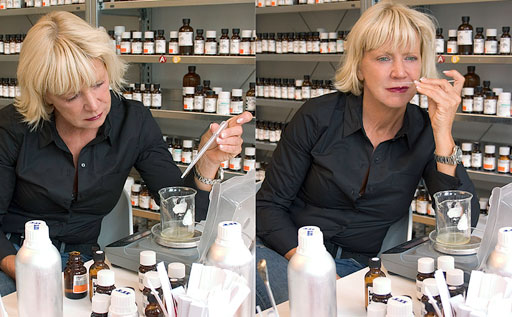
The smell hit me like a punch in the teeth. Staggering, I tried to make sense of the pungent, salty, almost sweet odor. It was certainly offensive, but also curiously intriguing. What was this? The offending waft came from a single molecule found in some of the world’s most-celebrated cheeses. At once slightly nauseous and satisfyingly complex, it’s also responsible for giving beer its heady, hoppy bite. It’s found in less-exalted places, as well. Namely, locker rooms. The same chemical, known as isovaleric acid, is solely responsible for what makes stinky feet smell like, well, stinky feet.
Read More“Pickering’s Computers” The final installment of this series on science’s elusive women will focus on English-American astronomer Cecilia Payne-Gaposchkin and the women of Harvard Observatory. Payne-Gaposchkin was the first scientist to assert, against conventional wisdom at the time, that stars are primarily made of hydrogen and helium. Presented in her 1925 thesis, this conclusion was so radical that she was talked out of presenting it by the senior astronomers with whom she studied. Years later, the community, of course, came around. Her work at Radcliffe was the first doctoral dissertation in astronomy from Harvard, and it marked a turning point in the establishment of astronomy as a field that is independent from mathematics. She climbed the nomenclature ladder from “assistant” to “astronomer,” becoming Harvard’s first female professor, and later, being named the university’s first female department chair. But she did not climb the ladder alone. Her path was cleared by a number of remarkable women who preceded her. Working at the Harvard Observatory under the direction of Edward Pickering, they were known as “Pickering’s Harem”, or, more tastefully, “The Harvard Computers.” These women, paid 25 cents an hour, proved to be quite the processing machines. As an assistant, Henrietta Leavitt …
Read More






